We asked several HIT vendor executives the following question: What will be the hot topics at HIMSS this year?
Tim Elliott, CEO, Access

I think mobile healthcare technology will be the hottest topic at HIMSS this year. With hospitals’ increasing adoption of iPhone, iPad, tablets and other mobile devices, patient information is becoming more portable and readily accessible than ever before. There is also more and more bedside and remote computing. This increasing acceptance of mobile applications presents a great opportunity to securely collect data on the fly and interface it paperlessly into EMRs/EHRs, and for clinicians to focus less on paperwork and more on patients.
The most successful offerings will provide strong security features that ensure patient privacy, the flexibility to tailor successful user experiences to multiple device types, and the support of multiple platforms and browsers. The growth of the healthcare mobility space is shown by HIMSS running more sessions dedicated to it, which will give vendors the chance to show to healthcare providers that their mobile offerings are usable, scalable and applicable to the needs of today’s healthcare enterprise. To overcome the skepticism of clinicians who are used to paper-focused processes, technology vendors will have to prove that they understand the pain points of those who are ‘in the trenches’ and have developed solutions that retain the ease and speed of paper while bypassing its limitations.
J.P. Fingado, President and CEO, API Healthcare

EHR certification and earning stimulus payments for demonstrating Meaningful Use will likely be top-of-mind for many healthcare IT professionals at HIMSS11. However, with all of the uncertainty surrounding the future of healthcare reform legislation, there is a great deal of focus strategizing on projects that provide a fast, measurable payback while at the same time increase the quality of delivered care. As labor is still the largest operating expense, cost containment efforts around the workforce can fulfill the balance between the need for high quality care and the financial realities of delivering that care.
There is interest building in solutions that that make the real-time connection between patient’s clinical requirements and the staff required to meet those needs. This link, if done correctly, drives improved financial and patient outcomes for an organization with less costs. This focus on talent optimization is empowering healthcare providers to deliver high quality patient outcomes in the most cost-effective way.
Matt Perkins, Chief Technology Officer, Awarepoint

The buzz and focus will still be on Meaningful Use and best practice standards of care, but from where we sit, many healthcare leaders may be overlooking an important technology that is integral to maximizing overall quality, efficiency and safety in hospitals. It’s going to be tough to break through the focus on incentives for Electronic Health Record adoption and associated best practice standards of care. However, without immediate, real-time information on location and condition of assets – and the analytics, dashboards and workflow modeling around usage and availability of equipment and resources needed to care for patients – the best intentions and technology spend are missing a vital component.
How can hospitals be optimally effective in clinical care without knowing the location and status of needed equipment or the availability of appropriately skilled staff resources? When you think about the value of CPOE, the electronic entry of physician orders for the treatment of patients, the primary goals are clear: reduce errors and decrease delays in order completion. These goals can only be optimally achieved when medical staff have true enterprise awareness in real-time. This awareness provides valuable information to see exactly where the particular specialty equipment needed is located, improves efficiency of transport and order turnaround times to departments such as pharmacy, laboratory or radiology responsible for fulfilling the order, and provides the business intelligence needed to effectively move patients to appropriate levels of care, or discharge them, in a timely, safe and cost effective way. It’s only with this level of accountability and awareness that hospitals will be able to support increased volumes with the same or fewer resources.
Cynthia Porter, President, Porter Research

Health Information Exchange and Accountable Care will definitely be on the minds of most at this year’s show. Porter Research and Billian’s HealthDATA have been talking with providers from across the country about each of these healthcare trends for our reports and webinars. Though all have a perceived notion of what these models entail, many are still murky on the details of the HIT nuts and bolts needed for true interoperability of these types of systems.
It is easy enough to identify what hospitals are on their way, especially with tools like the Billian’s HealthDATA Portal, which gives a comprehensive snapshot of what HIT systems hospitals have in place, or are planning for. But it is still a question of “What do I do with all this?” when it comes to the steps providers will take next for HIE and ACOs. HIMSS will provide a much-needed forum for providers to put their heads together and come up with those next steps to sustainable implementation. Porter Research is looking forward to joining some of these discussions on the show floor, in educational sessions and at networking events so that we can continue to act as a mouthpiece for providers’ perceptions.
Andy Hurd, CEO and Chairman, Carefx

With healthcare organizations looking to adhere to Meaningful Use guidelines, achieve financial success, track and improve performance, provide better quality patient care and become accountable care organizations, it’s without question that ways in which healthcare organizations can improve performance will be ‘Top of Mind’ at HIMSS 11.
Healthcare organizations are always searching for new and innovative ways to set new goals, identify and eliminate waste, and improve processes and workflows. In order to achieve clinical, financial and operational success, organizations need to expand data-driven management to include performance indicators and rely on insights generated from intelligence tools to drive modifications in objectives and strategies.
Beth Pickard, President and CEO, Clairvia

With EHR at the forefront, healthcare organizations will be looking for ways to leverage their rich clinical data to lower care costs and improve the patient’s experience.
At Clairvia, we believe the first place to provide interoperability will be with the clinicians, who are the main determinant of how the patient experiences his or her treatment. The optimal path for reducing care cost will be to use point-of-care clinical data for real-time decision support that focuses on moving the patient to the next care outcome. Our customers also are telling us that health care organizations can reduce care cost by improving clinician care coordination and communication. Tools that provide interoperability between clinical data and resource data will be where health care organization will find cost savings.
Rob Culbert, President, Culbert Healthcare Solutions

2011 brings with it the excitement of growth and getting involved in new opportunities in the ever-changing healthcare industry. Hot topics at HIMSS will be leveraging technology to achieve Meaningful Use and to support new reimbursement systems including Accountable Care Organizations and Medical Home. These topics require healthcare organizations to further align clinical operations, revenue cycle, and information technology.
While clinical integration strategies have increased in popularity, technology will play a pivotal role to support clinical alignment with independent community practices. Deployment of technologies to community practices is much more involved than a simple IT implementation. HIMSS 2011 attendees will hear success stories and lessons learned from industry peers to help their organizations develop and execute successful strategies for achieving their unique goals.
Jim Lewis, CEO, Cumberland Consulting Group

MIPPA ePrescribing – while most of the provider community is talking about Meaningful Use, many are now shifting their attention to the looming deadlines related to the ePrescribing incentives that went into effect with the Medicare Improvements for Patients and Providers Act of 2008 (MIPPA).
MIPPA provided a 2% incentive payment to eligible professionals who successfully ePrescribed beginning in 2009, with incentives also available for 2010 and 2011. The news many have missed is that eligible providers that do not ePrescribe by June 30, 2011 will be subject to a 1% cut in Medicare Part B reimbursement for all of 2012. For those that don’t ePrescribe by December 31 of 2011, the cuts grow to 1.5% in Part B reimbursement for 2013 and 2% for each year they don’t ePrescribe after 2013.
For small physician practices, the barrier to qualify for the incentives and avoid the penalties is low: EPs must use a qualified eRx system and report 10 encounters by June 30, 2011 (and 25 encounters by December 31, 2011) with the appropriate G-code to CMS. Many health care systems with large numbers of employed physicians are now focusing on the steps required to avoid the MIPPA penalties.
Peter McClennen, President, dbMotion

While the conversation about connected healthcare moved front and center last year at HIMSS10, I would bet this year most of the conversations will focus on clinical workflow with deep integration to EMRs as the only way to truly realize the full benefits of connected information.
Right now, point of care information delivery is critical. And, for HIMSS11, most everyone will be discussing how to enable Accountable Care Organizations (ACOs) and Patient Centered Medical Home (PCMH) though HIE.
Colin Konschak, MBA, FHIMSS, FACHE, Managing Partner, DIVURGENT

We believe a hot topic at HIMSS this year will be the topic of Accountable Care Organizations (ACO). We anticipate significant coverage of important and timely issues affecting healthcare providers, clinical practices and practitioners, insurers, government agencies, and legal professionals with regard to the movement toward establishment of accountable care organizations. The past decade has yielded numerous insights derived from demonstrations and pilot projects related to healthcare quality and payment reform, and has brought our nation to the present point of transition in the system of healthcare delivery. Recognizing that many issues are still unfolding for accountable care organizations through both legislation and initiatives in the private sector, it is clear that organizations are thirsty for information on how information technologies support the ACO model.
Given the federal legislative measures passed since 2008, our health system in the United States is undergoing significant changes that will impact the healthcare services available to future generations. Accountable care organizations are one potential vehicle emerging from a decade of pilot projects, demonstrations, and healthcare reforms that can help us attain the goal of providing higher quality care for all our citizens.
Heather Caouette, Director of Marketing, eClinicalWorks
ACOs will be a hot topic this year as the regulations will have recently been announced and attendees will be looking to learn how technology will facilitate these care models.
Shane Hade, CEO, EDIMS

No one will be able to escape discussions on Meaningful Use and ARRA stimulus funds. We are hearing from our clients that there is a lot of doubt that the government will deliver on their promises of reimbursements to providers. CIOs, however, are also telling us that regardless of ARRA they have to improve on their HIT and need to better understand and leverage the capabilities in good EMR systems.
Similarly, Accountable Care Organizations will also be generating discussion as providers, payers, and vendors attempt to understand the implications and opportunities for treating the whole patient and delivering continuity of care.
Zac Sgro, Vice President of Business Development, Enovate
I agree that ARRA will be a major discussion point. However it’s always hard to single out which theme will get the most attention at HIMSS. HIMSS is always a showcase for the newest and most exciting technologies that will help clinicians improve care for the patients. Personally, I am looking forward to seeing the advancements made in the areas of point-of-care documentation and med administration.
I am also anxious to see how the iPad, Droid and other tablets will be used compared to more traditional technology. My guess is that the newer tech gadgets like the iPad will be a nice compliment to computer carts and wall mounts.
Michael O’Neil, CEO and Founder, GetWellNetwork, Inc.

A patient’s journey begins before he or she enters the hospital and extends after discharge. It’s what happens — outside the hospital’s four walls — that’ll determine how well patients recover and return to optimal health. As a result, patient activation is a conversation we should all be having in health care.
We need to think about how we can help engage patients throughout the entire care continuum, while knowing that a patient-centered approach to care leads to improved patient satisfaction, lower cost-per-case, and better compliance with Meaningful Use Standards.
Tee Green, President and CEO, Greenway

Now that Meaningful Use registration is underway and the industry is seeing Medicaid funds starting to flow, there will be a lot of discussion at HIMSS on how hospitals and ambulatory practices can maximize incentives and coordinate menu set criteria to keep the focus on improved patient care.
The industry is also anticipating the proposed rule on Accountable Care, which should be published before opening day. This is where hospital and ambulatory care can continue on the path to a truly integrated healthcare system that firms like Greenway demonstrated at the IHE Connectathon and of course at the HIMSS Interoperability showcase.
It’s gratifying to see that the platform EHRs like PrimeSUITE were built on are becoming essential. And nowhere like at HIMSS will the discussion also be elevated on integrating devices and all means of coordinated patient care into a highly usable platform.
Rob Drewniak, Director, Strategic and Advisory Services, Hayes Management Consulting

The role of the CIO is changing as fast as the healthcare industry. No longer is it enough to keep the systems up and running. CIOs need to help solve business problems and use technology to comply with the multitude of new requirements facing their organizations.
CIOs and their teams have been fully consumed by the effort to get to meaningful use; ICD-10 preparation has taken a back seat to these efforts. While the ICD-10 readiness preparation may not be the full responsibility of the CIOs, they will most certainly be counted on to make the technology requirements happen seamlessly. At HIMSS, I believe CIOs will be seeking best practices for quickly organizing a structured approach to ensuring that their technologies and trading partners are identified, tested and ready for the go-live activities – all while meeting the MU requirements deadlines, too.
Daniela Mahoney, RN, President & CEO, Healthcare Innovative Solutions

Hospitals across the country are facing the challenges of clinical transformation related to the implementation of meaningful use requirements while balancing budgets, physician adoption, and a wave of fast approaching requirements that will greatly impact clinical processes in the future (i.e. ICD-10, ACO and Value Based Purchasing).
Evaluating and implementing CPOE is a top concern, especially due to historic low provider adoption. A great deal of effort is spent on learning about efficient practices of implementing CPOE in order to meet the political timelines set by CMS. All of these transformations, paired up with the ever-evolving HIE requirements and the high demand of qualified IT resources, pose great concerns to all in the healthcare IT industry. In the midst of all of these challenges, what is the most important factor to remember?
Although all this transformation is led by IT, we need to understand that at the epicenter of it all, we must place patient safety — that beyond technology, it is about delivering better care and improving outcomes. To be successful, we must have an in-depth understanding of how these requirements impact the clinical workflow of all clinicians involved in the care delivery process.
Joel Berman, President, Iatric Systems

We believe that HITECH/Meaningful Use will continue to be the hot topic this year.
Last year, we saw CIOs and IT managers becoming educated on all things HITECH as they worked to develop their IT strategy. This year, we are seeing a clear shift to implementation. CIOs are now looking for certified products that can be implemented efficiently while complimenting their existing HIT investments.
We expect to see significant interest in the areas of Health Information Exchange/Interoperability, patient access to electronic health information and patient privacy monitoring.
Gary Zegiestowsky, CEO, Informatics Corporation of America

Hot healthcare hot topics this year will focus on restructuring healthcare organizations to meet the growing need for collaboration among the multiple participants within the delivery system to achieve an accountable care organization (ACO).
Although the ACO is not yet fully conceptualized, the technical infrastructure to support the exchange and translation of data to coordinate care over the multitude of settings within which care is delivered and consumed will be the implementation focus. An emphasis on supporting informed and coordinated transitions of care will emerge. Collaborative teams with a unified goal of establishing primary care homes and patient engagement in a supportive and preventive chronic disease management process will develop and become the norm.
The technology deployed within the delivery system must empower this fundamental change through a flexible, standards-based interoperability platform that allows multi-use of data in a secure but free-flowing environment that supports communication, analytics and the privacy concerns of providers and patients. Ultimately, the healthcare delivery system will struggle with both the politics and the conflicting policy changes and challenges associated with federal, state and local initiatives, while meeting the ongoing operational impacts of ICD10, 5010, consolidation, physician acquisition and achieving meaningful use.
Ed Gaudet, Chief Marketing Officer, Imprivata, Inc

Meaningful Use will be the hottest topic at this year’s Annual HIMSS Conference. Since the DHHS published the Final Rule in July 2010, Meaningful Use has been the focus of every US healthcare executive. Today, Stage 1 of Meaningful Use dominates agendas, with at least four years of objectives, incentives, and penalties still to come. While the 4th annual Imprivata pre-HIMSS survey revealed a number of thought-provoking trends, 75% of the nearly 500 respondents reported that Meaningful Use is their top budget priority in 2011.
What is telling, and is reflected by 53.2% of respondents in this year’s survey and the results of over 40 interviews with our customers since the Ruling, is that physician adoption of EMR applications is the greatest challenge organizations face with regard to meeting requirements for Stage 1 Meaningful Use. In fact, 87% of those surveyed stated that EMR access times and associated workflows impact clinician satisfaction, and barriers to fast EMR access such as password issues are the single biggest cause (48% response) of slow EMR adoption. EMR access and adoption concerns affect more than just Meaningful Use; over 75% of respondents agree that slow EMR access negatively impacts patient care. You can find a copy of this year’s survey at www.Imprivata.com.
Frank Naeymi-Rad, MBA, PhD, CEO and Chairman of the Board, Intelligent Medical Objects

While interoperability has received much attention from the vendor community, the hot topic at HIMSS this year will be flexibility. Clients have invested in single vendor solutions to avoid the dread of interoperability and now expect flexibility to maximize the value of their investments.
Users are being asked to integrate an increasing number of daily workflows and clinical processes into their practice. As a result, they will demand the ability to accomplish clinical tasks in multiple ways. For example, clinicians will want to choose how they document patient information in their EHR. Some may desire drop-down lists, others dictation, real-time speech recognition, digital pen usage, mobile applications and/or other evolving technologies. To accommodate these demands, vendors will need to be flexible with their offerings and must provide stable and adaptable infrastructures to maintain integrity across these various modalities.
Vocabulary offerings such as IMO’s Problem IT and Procedure IT capture clinical intent as well as point of care mappings to ICD-10, SNOMED CT, CPT, etc. and are key elements to sustaining an accurate and maintainable patient record. IMO delivers its service through flexible components to complement our vendor partner offerings and make our solutions work in any way necessary.
Dave Dyell, CEO, iSirona
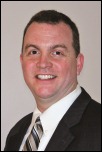
With the heavy burden of collecting Meaningful Use dollars facing healthcare providers, a lot of the talk at HIMSS will specifically center around EHR best practices.
Healthcare providers know they need to quickly (and successfully) develop an approach to their EHR, but that doesn’t mean there’s a straightforward solution to doing so. A recent article in InformationWeek speculated that while most hospitals expect to qualify for Meaningful Use funds, most shouldn’t expect a return on their health IT systems investment. While that’s debatable, it underscores the vital need to approach meaningful use and your EHR with a strategy in mind.
Our clients are doing so by implementing device connectivity in conjunction with their EHR. This not only matures the EHR, but maximizes the hospital’s overall investment by ensuring the data contained in it is more accessible and more accurate.
Jay R. Anders, MD, CMIO, MED3OOO, Inc.

The real story at HIMSS this year is EHR usability and tablets like the iPad.
The tablet format has taken the healthcare world by storm. Even with its shortcomings, it has risen to the top of devices physicians want to use. In addition, we are starting to see great strides in the usability of EHRs.
For the last several years, EHRs have added feature after feature without really thinking through what a physician has to accomplish in their day. This has been exacerbated with the onset of Meaningful Use certification. I see the EHR morphing into a set of functions tailored to the physician’s needs. Clinical documentation, clinical decision support, and interoperability will be at the forefront of EHR design for the foreseeable future.
Physicians are starting to look at changing the EHR they have to one that will really support their workflow. With products like Medicomp’s “Quippe” which is iPad enabled and has the ability to be embedded in an EHR, the physician now has clinical decision support and state of the art clinical documentation that is fully coded and can be reported upon in numerous ways.
Eric Demers,Senior Vice President, Health and Life Science, MEDecision

With reform bringing sweeping change to the healthcare system, MEDecision believes that one of the main topics at HIMSS 2011 will be discussion regarding the right technology to support Patient-Centered Medical Homes and Accountable Care Organizations.
These models will be a staple of the “new” healthcare system. They’ll rely heavily upon electronic medical records (EMRs), but that’s not enough. EMRs aren’t sufficient at managing patient populations for quality and outcomes, and that’s what the PCMH and ACOs need. It comes down to emphasizing proactive care and effective outreach. That, in turn, depends on health information exchange and analytics capabilities, along with tools to determine health- and wellness-related gaps-in-care, chronic conditions and medication conflicts.
This is where we believe healthcare is heading and so we’ve devoted significant resources to accommodating the market’s growing needs in this area. In fact, at HiMSS we’ll demonstrate provider-focused collaborative care management tools that enable ACOs and medical homes to address these and other technology needs.
Brent Dover, President, Medicity

ARRA and the promise of stimulus funds will continue to drive the hot topics at HIMSS.
Dr. Blumenthal recently outlined ONC’s priorities for 2011: health information exchange, interoperability, privacy and trust. Therefore the Interoperability Showcase and solutions that allow data to flow securely between MU-certified technologies will be a draw at HIMSS. Technologies that simplify interoperability and meaningful use without disrupting clinician workflow will also draw attention.
We expect that attendees with interoperability plans already in place will turn their attention to increasing the intelligence of their exchange systems, focusing on clinical decision support and measuring quality improvement. On that same topic, forward-thinking organizations are starting to plan for the trend towards accountable care, so “ACO” will be a term frequently batted about at this year’s show.
Nancy G. Brown, Chief Growth Officer, MedVentive Inc.
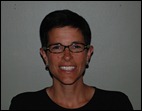
It will be interesting to see how the demographics of attendees may change this year. There will be a focus on Meaningful Use and ICD-10 changes, but the 2011 hot topic is the evolution of providers taking on true financial risk for cost and quality, also coined as an Accountable Care Organization.
The challenge: figuring out where your organization lies on a delivery continuum that’s shifting from fee-for-service care of individual patients in competitive, financially independent entities, to risk-based health management of entire populations as part of a collaborative, clinically integrated Accountable Care Organization (ACO). Right now, organizations have many more questions than answers. What exactly is an ACO? What is clinical integration? And what does one have to do with the other? Are there best practices for this? Where do we start?
There is a significant difference between using popular vocabulary versus actually figuring out both strategic and tactical application in order to successfully adapt to the shift of risk from payers to providers. It is easy to be overwhelmed by what you need to do and be underwhelmed by the performance of the tools you choose. I expect HIMSS will provide a great forum of discussion and sharing of opinions as well as knowledge on these topics – and open discussion is important for us to move healthcare forward in a positive direction. The alternative is scary.
Jay Mason, CEO and President, MyHealthDIRECT

The hot topics for HIMSS11 will be how to operationalize health reform while increasing efficiency and improving quality of care. In addition, healthcare organizations will be exploring how to effectively leverage social media in healthcare to engage with patients.
Accountable Care Organizations will be of particular interest, as healthcare organizations anticipate new models of reimbursement that require a higher level of community wide collaboration, particularly in the area of coordinating care and managing transitions of care between inpatient and outpatient healthcare settings.
Jeff Kao, Vice President and General Manager, NCR Healthcare

The looming impact of healthcare reform, coupled with consumers’ increasing expectation to play a greater role in managing their care, is creating a sea change for healthcare providers, many of whom will struggle to manage the anticipated increase in patient volume while delivering a superior patient experience.
Self-service technology – now pervasive in a number of other industries such as retail, banking and travel – is poised to make a significant impact in the world of healthcare by enabling and engaging the patient like never before. Automating routine transactions such as appointment setting, pre-registration and bill payment through online, mobile and kiosk technologies can better engage patients while driving revenue and efficiencies, both of which will be critical challenges for healthcare providers in 2011.
Massoud Alibakhsh, CEO of Nuesoft Technologies Inc.

The unfortunate truth is that 2010 was the year of ARRA, meaningful (?) use and EHR. Now that the incentive payments under HITECH are beginning to take effect, I believe that these topics will continue to occupy an inordinate share of the healthcare IT debate. As we are already seeing in many of the HIT blogs and forums, physicians are very concerned and even confused about choosing a financially stable, credible vendor. Should physicians go to the RECs for purchasing help? Consultants? Should they conduct their own search? The answer to these questions will emerge in 2011. Regardless of who drives the purchase, I think we will see that EHR companies that have been in the HIT industry for years and whose technology enables them to flex to today’s dynamic environment will thrive.
Scott Decker, President, NextGen Healthcare

I think HIMSS this year will focus on collaboration among providers, vendors, consultants, etc. and how they can achieve long-term growth and improve quality of care as partners.
The industry is full-swing into Meaningful Use now – a critical part of that journey and certainly still a hot topic this year – but attendees will also want to look beyond that to matters of interoperability and accountable care. Keeping that in mind, NextGen Healthcare’s spotlight for HIMSS11 will be on driving patient-centered care across the continuum.
Our goal is to help attendees learn how they can improve connectivity and integration within their community through use of health IT, quality management services and opportunities for collaboration like Accountable Care Organizations and Patient-Centered Medical Home. I believe attendees will also hone in on the current financial challenges in healthcare, so we expect to be talking a lot about best practices to boost competitiveness, manage costs, and grow their affiliate networks.
As evidence, several NextGen users are lined up to speak at HIMSS11 on these topics. They’ll be sharing some impressive success stories along the road to achieving Level 3 PCMH, effective health information exchange, Meaningful Use and overall financial and quality improvements.
Paul Brient, CEO, PatientKeeper Inc.

Much of the buzz at HIMSS11 will focus on hospitals looking for solutions to achieve Meaningful Use. Stage 2 Meaningful Use requirements are just around the corner, and it appears that the bar will be set a lot higher than Stage 1 in term of physician adoption of CPOE. To reach these higher levels, especially in community hospitals, it will be critical to deploy CPOE that physicians want to use – which means, in part, CPOE that supports physicians’ workflow, and that does not take more time than current paper-based systems.
Another requirement for Stage 2 appears to be electronic physician documentation; I expect we’ll be hearing about that at HIMSS11, too. Most attempts to date to automate this process have failed, as traditional documentation systems err toward one extreme or another: imparting too much structure, creating a cumbersome process and eroding the value of the clinical narrative; or providing too little structure, turning physicians into transcriptionists and taking them away from direct patient care. Tackling the documentation problem in a way that supports physicians’ workflow and will be readily adopted by physicians may be an even greater challenge than CPOE.
Todd Cozzens, CEO, Picis

As ARRA meaningful use, Medicare cuts, increased regulation and a myriad of other influences weigh heavily on healthcare, HIMSS attendees will be talking about the next phase for the industry that’s being driven by IT: sustainable healthcare communities, also known as accountable care organizations (ACOs).
Today, a connected, aligned and intelligent approach to healthcare is both possible and absolutely necessary in order for hospitals to survive and thrive. Sustainable healthcare communities will not only change the way providers are paid, but enable true coordination of patient care across the modern health ecosystem. With patients, physicians, providers, payers and pharmaceutical companies equally motivated to tackle challenges of our healthcare system head-on, coupled with strides in technology innovation, much of the discussion at HIMSS will be about how to make sustainable healthcare communities a success.
Betty Otter-Nickerson, President, Sage Healthcare Division

It is simple to state the obvious HIMSS trends this year – ACO’s, PCMH, HIPAA 5010 and its brethren ICD-10, as well as telemedicine and the trend of hospitals buying physician practices — but there’s more going on, and much of it garners little attention.
From this point onward, healthcare will be about electronic records, mobility and connection: connection to a system, mobility between multiple sites, and electronic health and information exchanges between physicians and their patients. Connected services are essential, as are accuracy, security and increased efficiency.
Connection and EHRs will continue to be the foundation for increased efficiency in the medical office, and leading to patients’ better understanding of health and to taking ownership of their care. The new healthcare economy — as it relates to interconnected services, mobility and interoperability, is changing the way vendors must communicate to physicians and healthcare — is being driven by the healthcare consumer, so it is our job as members of the healthcare technology industry to be “physician-focused, patient-centric” and to continue producing the products that serve consumers as they seek greater ownership of their health information and desire to have an “always on” connection with their care providers. As such, we must support physicians so that they are able to continually meet their patients’ expectations.
Once patients see how their care givers use EHRs to improve care, they realize the importance of the technology and how it is so much more secure – yet mobile – than paper records. Hopefully, with this realization, the trend of talking around the patient will diminish, and a seat will open up at the proverbial table.
Todd Johnson, CEO, Salar

It’s no mystery what’s hot this year: opportunities to demonstrate Meaningful Use. With the guidelines for achieving Meaningful Use now defined, the hype from 2010 will be replaced by substance in 2011. Hospitals have performed gap analyses to identify where their current EMR platform falls short, and we expect physician documentation to continue to be a priority for many CIOs. By replacing transcription and paper-based workflows with an integrated, physician-centric electronic clinical documentation solution, hospitals will secure the increased physician satisfaction they need to achieve a more complete EMR.
But the real hot topic – literally – will be sunny Orlando! All of us really need a break from this awful weather. HIMSS couldn’t get here fast enough!
Travis J. Leonardi, RPh, CP, President, Sentry Data Systems Inc.
Saving money is always a hot topic. At Sentry, we’ve used cloud computing to decrease costs and time to deployment . Moving to the cloud has also increased security, flexibility, and efficiency.
Sentry’s healthcare cloud solution is something that can work for organizations large and small and we’re excited to be able to show how our experience can be enjoyed other healthcare entities.
Stephen S. Hau, President and CEO, Shareable Ink

If HIMSS11 will be anything like HIMSS10, we can expect the exhibit floor to be besieged with exhibitors’ signage about meaningful use (typically: a noun, a verb, and the words “Meaningful Use.”) However, this year, the rubber meets the road.
I believe the hot topic among educated buyers will be about successful physician adoption of certified systems – in other words, securing the “use” in Meaningful Use.
We are all aware that CPOE, EDIS, and EHR systems have existed for decades. Further, history teaches us that these systems have been poorly adopted – largely because of a lack of physician usability. After all, these systems often require re-engineering of workflows and awkward changes to daily routines.
While the advent of Meaningful Use may encourage the transition to electronic systems, it certainly doesn’t make those systems any easier to use. To make the most of what may be a watershed moment for the HIT industry, we should deliver the most natural approach for physicians to interact with electronic systems.
Brent Christensen, Vice President – Business Operations, RATIO, a division of Software Testing Solutions

We believe that this years HIMSS conference will have a narrower and more concentrated focus than ever before. This focus will continue to build upon the ARRA drivers that dominated HIMSS 2010, but with a much more significant emphasis on meeting the key elements of Meaningful Use requirements with more robust and viable EHR and CPOE implementations.
As all healthcare organizations initiate and continue to strive to meet stricter and more defined governmental regulations, they will be seeking out reliable, proven, and cost effective IT solutions as real “partners” in this critical effort. Stage 1 meaningful use minimum requirements will be at the forefront for both healthcare professionals and healthcare vendors and never more emphasized than within the C-suite of these organizations. And, with only approximately 14 percent of the US healthcare institutions currently meeting the minimum standards of the 10 percent CPOE level requirements for Stage 1, the drivers that will demonstrate significant improvements in overall patient safety, increased organizational productivity, and the capture of their share of the $30 billion in Certified EHR Incentives for 2011 are both abundantly clear and ubiquitous for this year’s conference in Orlando.
Evan Steele, CEO, SRSsoft

It goes without saying that people will be talking about the practical challenges of implementing EHRs and demonstrating Meaningful Use. Now they will also be speculating about the implications of the Spending Reduction Act that—as part of its cost-cutting mission—would eliminate the EHR incentives.
But another important topic of conversation will be the problems created when hospitals try to force fit their EHR into their physicians’ ambulatory practices. It is patently clear that one size does not fit all; however, hospital CIOs will be hard-pressed to support more than one solution, given the demands already placed on their staff to meet the challenges of meaningful use for just their hospitals.
Richard Atkin, President and CEO, Sunquest
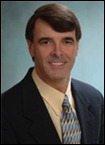
Two topics that will set the tone for many conversations this year are: Stage 1 Meaningful Use certification and strategic planning for future regulations. For users to meet the Meaningful Use criteria established for laboratory data, an advanced LIS solution must offer advanced technology, functionality, and security. At Sunquest, we have long held the belief that Meaningful Use requires meaningful laboratory results, and I am extremely pleased that Sunquest is the first LIS vendor to have earned modular certification for Meaningful Use.
Looking ahead, standardized nomenclature will shape the next stages of regulations. Therefore, it is important to develop a complete strategy to address anticipated LOINC and standardized nomenclature requirements in a proactive manner. Lab test volumes are growing and new tests are constantly being developed, so the LIS should strategically function as the “LOINC Hub” for the hospital enterprise.
At Sunquest, our comprehensive Meaningful Use plan includes expanding the use and management of LOINC and SNOMED-CT codes. This initiative is a critical priority to help our clients proactively plan for their inclusion of LOINC codes and is evidenced by our ongoing efforts to align with government Health Information Technology entities and the LOINC Committee.
Robert J. Hitchcock, MD, FACEP, Vice President, Solution Management, T-System, Inc.

Certainly the implications of ARRA on the industry will be weighing on most people’s minds at HIMSS this year. The topics that will dominate conversations at the conference will mirror what all of us are talking about right now: Meaningful Use, best of breed vs. enterprise, and interoperability.
Hospitals are looking to make strategic decisions about meeting Stage 1 Meaningful Use requirements. The next few years will bring additional CMS regulatory challenges, making the need to find a long-term HIT solution critical to an organization’s survival.
With this being said, everything starts in the emergency department. The anticipation of an exponential increase in ED visits due to healthcare reform brings the debate of which HIS is best to the forefront. Can an enterprise system handle the increased volume and complexities that EDs will face as well as a “best of breed” EDIS? Healthcare organizations need to implement a HIS that can evolve and quickly adapt to changes in regulatory and patient care standards. The ability to capture and share patient data is vital for hospitals both clinically and financially.
With interoperability playing such an important role in the decision-making process, I am thrilled that our EDIS recently passed Connectathon and will be demonstrated at the 2011 HIMSS Interoperability Showcase.
Stephen Farber, CEO, UltraLinq
With the increased focus by all healthcare market segments on IT solutions, we often lose focus on the customer. From a healthcare provider’s perspective, an IT solution is close to worthless if it isn’t simple to use. At HIMSS, I expect to see messages focused on workflow, interoperability, and efficiency. But as an industry, we have historically been weak on creating solutions that work well together. We acknowledge great value from aggregating patient data across practices and across networks, but there are few examples of successfully benefitting from this information. My hope is that this year we begin to actually see the prevalence of solutions that are based upon user-friendly workflow and interoperability.
Bruce Cerullo, CEO, Vitalize Consulting Solutions, Inc.

We at Vitalize believe there will be a couple of hot stories on the floor of HIMSS 2011. The first will be further acceleration in demand for HCIT consulting services stimulated by Meaningful Use, ICD-10 and HIPAA 5010 accompanied by a growing shortfall of qualified professionals. The second story will be a red-hot M & A market in our sector – as healthcare providers’ time-sensitive needs require firms like ours to offer quality, breadth and scale of services at a price point below the mega-firms.
John Santmann, MD, President, Wellsoft Corporation

I believe the hottest topic for this year will be the “specifics” of ARRA and Meaningful Use.
Last year at HIMSS, the buzz and discussion was on Meaningful Use concepts and criteria. This year, demonstrating the specifics of how Meaningful Use objectives can be achieved will shift the primary focus at HIMSS to integration and interoperability. One example of Meaningful Use integration discussions and requirements will be the Continuity of Care Document (CCD) required for use in exchanging basic clinical information.
Linda Peitzman, MD, Chief Medical Officer, Wolters Kluwer Health

Though there is no question that Meaningful Use of health IT will be a hot topic at HIMSS11, we believe that providers must begin looking past that and start focusing on the lessons to be learned from their efforts to achieve compliance with the incentive program. In particular, how they can better leverage health IT by deploying enhanced governance processes and advanced, intuitive clinical decision support tools. Doing so will drive improved core measures performance and care outcomes and accelerate adoption of evidence-based medicine.
Another hot topic should be automation, specifically how to leverage it to streamline processes that are critical to the efficient and cost-effective practice of evidence-based medicine. This includes identifying CDS tools that feature the advanced technical architecture necessary to enable automation of updates to order sets and care plans based on changes to medical evidence. It also includes automating the creation and deployment of intuitive rules and alerts to ensure that health IT can achieve the objectives of improving quality and safety of care while reducing costs through the elimination of preventable medical errors.

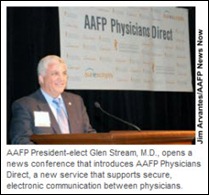

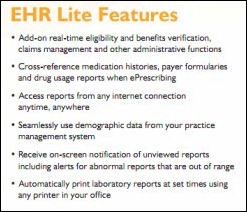


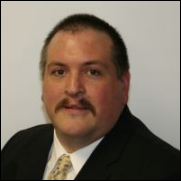














































The article about Pediatric Associates in CA has a nugget with a potentially outsized impact: the implication that VFC vaccines…